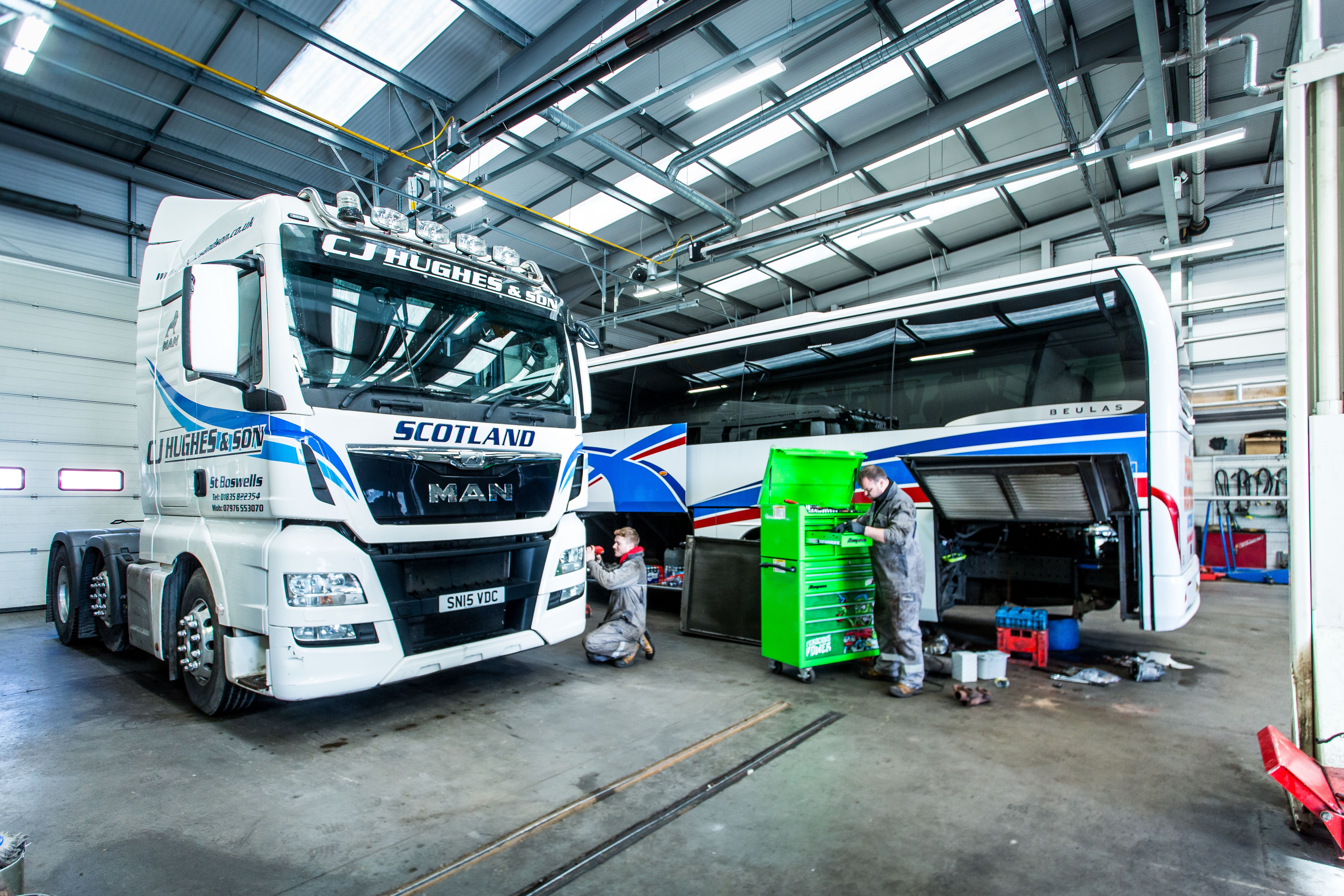Following an update last year, workshops must meet more stringent air quality standards, or risk prosecution, says Kevin Swallow.

The main chemical constituents of diesel engine exhaust emissions are: carbon, water, carbon monoxide (CO), carbon dioxide (CO2), nitrogen (N2), nitrogen oxides (NOx), oxides of sulphur (SOx, including sulphur dioxide, SO2), alcohols, aldehydes, ketones, and hydrocarbons.
Collectively, the HSE refers to these as diesel engine exhaust emissions, or DEEEs. HSE says: “Prolonged exposure to diesel fumes, especially blue or black smoke, may lead to coughing and breathlessness. Long-term repeated exposure to diesel fumes over a period of about 20 years may increase the risk of lung cancer.”
Maximum exposure levels were updated in the third edition of the EH40/2005 workplace exposure limits (WELs) last year. They are expressed in two time-weighted periods; long-term (LT) is eight hours and short-term (ST) means 15 minutes.
Compared to the previous edition, WELs for CO are down a third to 20ppm over LT and halved to 100ppm during a 15-minute exposure; CO2 WELs are unchanged at 5,000ppm LT and 15,000ppm ST; NO2 limits are 0.5ppm LT and 1.0ppm ST; the LT WEL for NO is 2.0ppm (www.is.gd/uwafeh).
A spokesperson for Socotec, a company that provides testing, inspection and compliance services and is based in Burton-upon-Trent, says employers need to ensure that WELs are not exceeded, through both real-time measurements and long-term sampling. It warns: “Failing to comply with regulations may allow workers to be exposed to hazardous substances at consequential levels, a subsequent ill workforce will result in productivity loss as well as hefty fines and prosecutions.”
In 2017 an employee of Parcelforce Worldwide, part of Royal Mail Group, sued for negligence for alleged breaches of existing health and safety regulations that protect staff from exposure to hazardous substances featured as part of COSHH (Control of Substances Hazardous to Health Regulations 2002). The plaintiff, backed by the Communication Workers Union, said during his shift at a major depot he was exposed daily to diesel exhaust pollution, which he said led to him developing asthma. Without any ventilation or protective equipment provided by his employer, he was also not made aware of the dangers of exposure to diesel fumes, and no risk assessment of where he worked was undertaken. Air quality was only first monitored in 2015.
Royal Mail settled the case out of court without admitting liability.
Protecting garage workers
At Auto Extract Systems, based in Leigh, Greater Manchester, marketing manager Gary Warner says smaller garages tend to go for exhaust extraction reels that are mounted to the wall or ceiling. He says: “Ideally there would be a vehicle exhaust extraction system at every bay with a fan, so ‘at-source emissions’ were taken away and not dissipated into the atmosphere. A manufacturer’s dealership will put the right equipment in, but small or back street garages often don’t want to invest in solutions, and will open the doors.
“That’s fine in the summer but in the winter a good employer would close the doors, put on the heating and use an exhaust extraction system.”
The extraction of diesel fumes plays a significant part in achieving the IRTE Workshop Accreditation. A dealership must demonstrate that its own exhaust extraction system is sufficient for the number of vehicles, and “that it is available for vehicles which are running in the workshop and is maintained in working order”.
For example, across the MAN Truck & Bus UK dealer network, each workshop bay is fitted with a built-in exhaust extraction system that will draw exhaust gas and any harmful particles, putting them through a filtration system and venting them through the roof. Any vehicles that require the engine to run while in the workshop have an exhaust extraction system attached to the vehicle’s exhaust outlet and piped into the filtration system.
Natural Gas Safeguards
IVECO Trucks UK is steering a course towards natural gas-powered trucks. Up to 50 of its 84 dealers and service points have seen investment in specific equipment to work on natural gas trucks. Peter Miles, fleet service and NP business manager, says that ABS Group audited its workshop safeguards. Recommendations included certified lighting systems, sealed non-incandescent lighting systems integrated with floor and ceiling-based methane alarms, and hopper-based ventilation systems. Some dealers are creating dedicated gas truck bays; others, guided by a risk assessment, are either providing workers with protective equipment, or moving the trucks outside.

